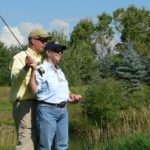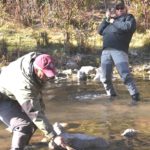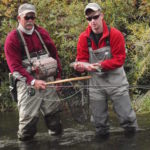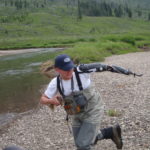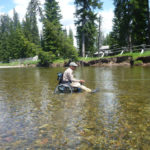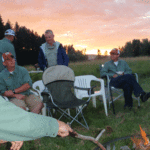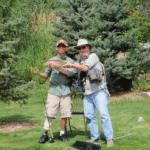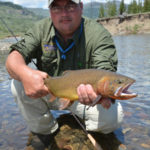
I don’t own land. I live in an apartment in a city of 2-plus million people. But I love to hunt ring-necked pheasants. So I rely primarily on publicly accessible lands for almost all my hunting. Can you relate?
I know many of you can, which is why for the last four years, Pheasants Forever has held its Rooster Road Trip event, a one-week online hunt that showcases not only the opportunities for the public-land pheasant hunter but also Pheasants Forever’s heavy involvement in many of these projects. And to underscore the breadth of Pheasants Forever’s upland habitat work, the Rooster Road Trip makes its way across five states in five days.
This year, even in this era of unprecedented modern wildlife habitat loss, we once again found reasons for optimism and projects worth modeling in other parts of pheasant country:
- In North Dakota, the Sakakawea Pheasants Forever chapter approached the U.S. Army Corps of Engineers about adding food plots and shelterbelts to aid pheasants through the tough North Dakota winters. This was more than 20 years ago. The work continues to this day, and the chapter showed us a signature tract where they plan to embark on their next round of projects in 2014.
- In North Dakota, Pheasants Forever Farm Bill wildlife biologists worked with private landowners to enroll land in the Private Land Open to Sportsmen (PLOTS) program.
- In South Dakota, Pheasants Forever habitat specialists performed a 90-acre prescribed burn to rejuvenate the prairie, planted 29 shelterbelt acres for winter wildlife cover and controlled noxious weeds at a north-central state game production area.
- In Nebraska, Pheasants Forever teamed up with Nebraska Game and Parks Commission to work with private landowners and enroll land and administer the Open Fields and Waters Program. Approximately 300,000 acres are currently enrolled in this effort to expand hunter and angler access to private lands.
- In Iowa, the Northern Polk and Iowa Capitol Pheasants Forever chapters have led habitat restoration efforts – native grass plantings and invasive tree removal – at multiple state wildlife management areas just minutes outside of Des Moines.
- In Minnesota, the Nobles County Pheasants Forever chapterhas been aggressively using its locally raised funds and finding additional partners and available state and federal funds to purchase lands in the area, then open them to the public. In 30 years, the chapter has helped permanently protect more than 2,000 acres as either state wildlife management areas or federal waterfowl production areas.

The author with a ring-necked pheasant hunted on public land enrolled in the Private Land Open to Sportsmen (PLOTS) program. Photo Courtesy of Anthony Hauck.
Hunting with local Pheasants Forever volunteers in five locations represents just a snapshot of Pheasants Forever’s impact. We have 700-plus (including the Quail Forever) chapters doing public land acquisition and restoration work across the country – areas open to me, areas open to you and areas that will be open to hunters in years to come for their own rooster road trips.
View Rooster Road Trip daily photo galleries here.
-Anthony Hauck is Pheasants Forever’s Online Editor


